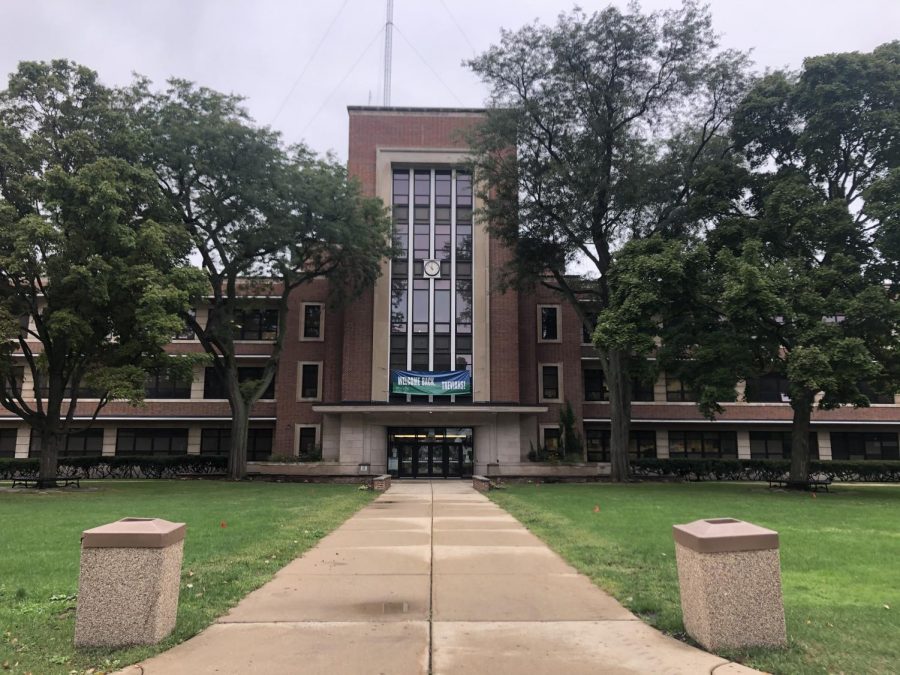School’s plan strives to promote equity and social well-being
Original plan under revision to create new practices to enhance experiences of minority students and staff
NT News File Photo
At New Trier, the intense nature of extracurriculars prevents students in their pursuit of multiple activities and leadership opportunities
Following a spring and summer of racial reckoning, the school is making changes to the New Trier 2030 plan. The Equity Steering Committee, which includes teachers and students of color, has come together in order to reassess and further develop the existing plan.
Although the school has always had an intent to create a place of equity for all, they formally put forth a plan in the beginning of 2019. The plan outlines a general direction for the school as a whole and for each academic department as well.
According to the school website, New Trier 2030 “will chart a course for the future of New Trier High School over the next decade and beyond.” The plan will target areas such as students’ education, well-being, growth, and engagement to create a school culture in which students find passion, support, and enjoyment in all of their endeavors.
Timothy Hayes, the Assistant Superintendent for Student Services, said that over the course of the summer, the committee reviewed the community’s calls for action and “divided into several different committees to look at a bunch of different things like policies, programming, climate in the school, and student connection and belonging.”
Their findings will be summarized into recommendations, presented at the school board meeting on Oct. 19, and implemented into the new annual plans for 2030.
In addition to improving the experiences of students of color, the school plans on adding more people of color to its staff as well.
According to Hayes, the school was scheduled to attend the recruitment fair at Howard University, a historically black university, to show that “we are a school that is interested and wants to have teachers of color.” However, they were unable to attend due to the pandemic.
The administration recognizes the challenge of showing possible teaching candidates that they’ll feel safe, accepted, and supported in a predominantly white community. Nonetheless, Hayes said the school is committed to diversifying the teaching population and will work towards creating a successful experience for faculty of color.
While the school examines its structure and community, each academic department has been tasked with investigating their own curriculums. Every department has created an equity team of teachers to specialize in reviewing the curriculum and existing practices. Though each department is approaching the process somewhat differently, they all share a similar intent of creating a better learning environment and experience for their students.
English Department Chair, Edward Zwirner, explained how over the past year the department has “agreed on how best to approach certain texts and the discussion of what can be considered some delicate topics surrounding race, gender, and ethnicity.”
Now, the English Department has moved into a formal audit of the curriculum to create an instrument that will ensure the English curriculums meet equity standards for many years to come, according to Zwirner.
Unlike some other departments, the English Department faces an intensive process in modifying their courses’ curriculums.
According to Zwirner, the process to include a new book in an English class takes anywhere from three months to a year. In this process, teachers must examine the readability level of the text itself and what it brings to the course in terms of its perspective and theme.
Redesigning the variety of English courses at the school is a collaborative process and calls for the help of the entirety of the English department, Zwirner said.
Last year, the English Department’s equity team met at least once a month, and in total, the whole department dedicated 25 hours of professional development time to the cause of equity.
“This year is very different because we can’t even physically get everybody in the same space. People are all over the place,” said Zwirner.
By 2030, he hopes to see an appropriate balance in the English curriculum between classical and contemporary work. He also hopes to put in place a system that continually refreshes the English curriculum.
“In 10 years, the voices that students may need to hear from then could be different than the voices that the students of today need to hear from.”
Like the English Department, the Social Studies Department also created an equity team.
“We want to make sure that we’re doing it well and we’re doing it thoughtfully and thoroughly, to the best of our abilities across the curriculum,” said Michael Christensen, the chair of the Social Studies Department.
The department plans on adding courses that more specifically deal with equity rather than solely including it in existing classes. As of now, they have a course in the works titled Modern America that, unlike other courses, will look closely at issues of discrimination and justice in contemporary America.
For the Social Studies Department, it is not about creating a concrete and constant set of course materials. Rather, it is about establishing a flexible department that can quickly adapt and develop curriculums that teach students what they need to learn.
The conditions of the COVID-19 pandemic have created a large obstacle for staff, but, they’re committed to overcoming it and to continue working towards establishing a more equal and supportive educational environment for all but most importantly for the students and staff of minority groups, according to Christensen.
“People are excited to think about it. They’re excited to talk about it…this is something that means a lot to all of us,” said Christensen.







































